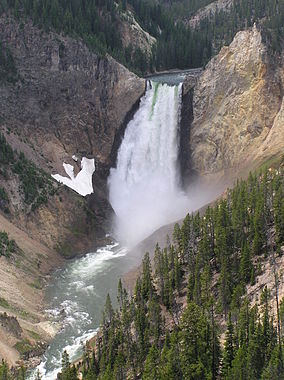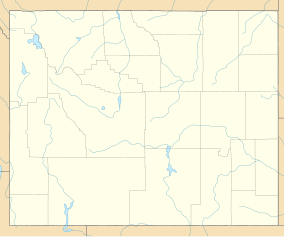Yellowstone National Park
| Yellowstone National Park | |
|---|---|
|
IUCN category II (national park)
|
|

Grand Canyon of the Yellowstone
|
|
| Location of Yellowstone National Park | |
| Location | |
| Coordinates | 44°36′N 110°30′W / 44.600°N 110.500°WCoordinates: 44°36′N 110°30′W / 44.600°N 110.500°W |
| Area | 2,219,791 acres (8,983.18 km2) |
| Established | March 1, 1872 |
| Visitors | 4,257,177 (in 2016) |
| Governing body | U.S. National Park Service |
| Website | Official website |
| Type | Natural |
| Criteria | vii, viii, ix, x |
| Designated | 1978 (2nd session) |
| Reference no. | 28 |
| Region | The Americas |
| Endangered | 1995–2003 |
Yellowstone National Park is a national park located in the U.S. states of Wyoming, Montana and Idaho. It was established by the U.S. Congress and signed into law by President Ulysses S. Grant on March 1, 1872. Yellowstone was the first National Park in the U.S. and is also widely held to be the first national park in the world. The park is known for its wildlife and its many geothermal features, especially Old Faithful Geyser, one of its most popular features. It has many types of ecosystems, but the subalpine forest is the most abundant. It is part of the South Central Rockies forests ecoregion.
Native Americans have lived in the Yellowstone region for at least 11,000 years. Aside from visits by mountain men during the early-to-mid-19th century, organized exploration did not begin until the late 1860s. Management and control of the park originally fell under the jurisdiction of the Secretary of the Interior, the first being Columbus Delano. However, the U.S. Army was subsequently commissioned to oversee management of Yellowstone for a 30-year period between 1886 and 1916. In 1917, administration of the park was transferred to the National Park Service, which had been created the previous year. Hundreds of structures have been built and are protected for their architectural and historical significance, and researchers have examined more than 1,000 archaeological sites.
...
Wikipedia


